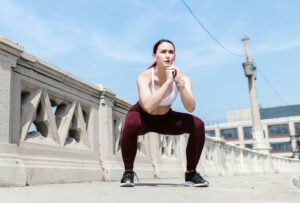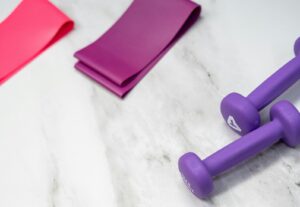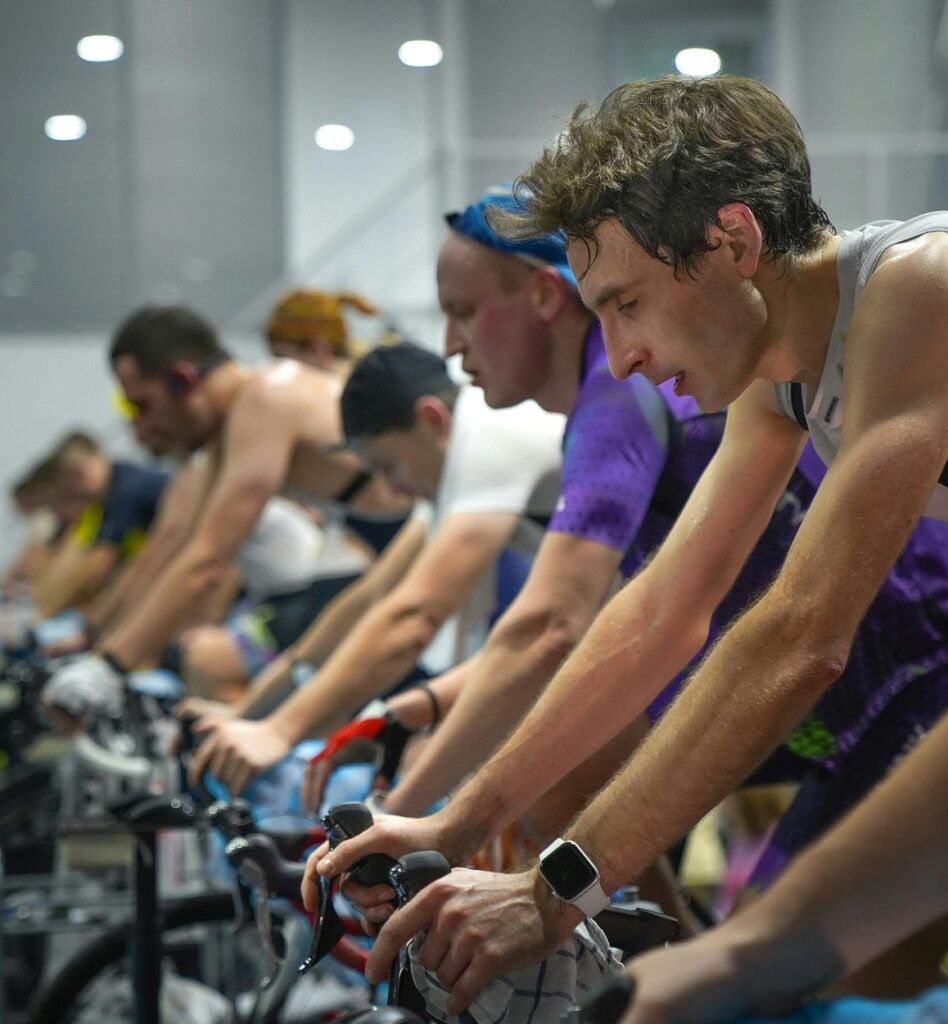Stealth Exercise
With “exercise snacks,” you can squeeze in a workout, even during a busy teaching day.
As spring approaches, many of us set new health goals. But for a busy music educator, trying to squeeze in a workout before or after a day of work can be tricky. There are concerts, classes, rehearsals, administrative obligations and performances. Who has time to exercise?
Thankfully, recent research demonstrates that brief bouts of activity, also known as “exercise snacks,” can sharpen focus, improve circulation, boost your mood and deliver many of the same benefits of a longer workout. In other words, if you don’t have time for a symphony, how about an interlude? Exercise snacks are ideal for crazy-busy teachers, as they help preserve and boost your health and energy. Here are a few to try.

Cop a Squat
Few exercises are as beneficial and easy to do —literally anywhere — as the humble squat. Squats improve lower-body strength, stability and bone density. They also help strengthen the core muscles that support your spine, according to Healthline, and they even improve circulation. You don’t need any equipment — just make the most of a short break and do 5 to 10 squats at a time, sprinkled throughout the day.
Restroom Ballet
As you wash your hands or brush your teeth post-coffee, make like a ballet dancer and do some calf raises. This low-impact exercise tones the lower leg muscles and can help with the body’s overall balance and stability.

Monitor Posture
Good posture has been a mainstay of musical performance since … forever. Choirmasters, maestros and prima donna all understand that how you stand influences how you sound. It’s also great exercise. Straighten up, engage that core and attend to your stance. If you’ve been hunched over, do a counter-stretch. If your back has arched (perhaps from holding a heavy instrument), tuck in your tailbone and re-stack your spine. These small adjustments contribute to improved tone and circulation, and they help prevent injury.
Wall-sit
As your students tune-up, do a wall-sit in the back of the room — or the front of the room if you’re looking to acquire a reputation as an eccentric. By the time they find their perfect A, you’ll have fired up your quads, hamstrings and glutes.

One Small Step…
Are you constantly walking from your office to your classroom, practice rooms and performance spaces? Let’s leverage that commute in the name of fitness: Take the stairs instead of elevators and move briskly. If your walk is super short, that is fine, too. Walks as brief as two minutes have been linked to improved cardiovascular health and mental acuity, and are especially important after you eat, helping balance blood sugar, according to research published in the journal Sports Medicine.

Snack Stash
You can probably find room to store a few items that will make your “fitness snacks” more productive: A yoga mat stowed in the corner, fitness bands tucked into a drawer, small hand weights under the desk — none of these take up much room, but they open up possibilities for a midday tune-up. With a yoga mat and 60 seconds of free time, you’ve got the makings of a challenging plank hold. On a call? Sneak in 20 curls with a light weight. Or use resistance bands under your desk to do some hip abductor work while you catch up on email.
Enlist the Troupe
Teaching a group of student musicians can sometimes feel like trying to direct the weather — but remember, you’re in charge, so bring them along on your new fitness regimen. Once or twice per class, instruct them to set down their instruments, stand up and do some shoulder stretches, lunges or neck rotations. Regular breaks to work and loosen muscles will help reinforce the importance of physical health in the life of any well-rounded musician. (Want more in-depth stretches? Check out our story “Ouch! Easy Fixes for 5 Common Teacher Pains.” )
Chair Yoga
If your job keeps you seated for most of the day, make the best of it with chair yoga. Twists, seated forward folds and shoulder stretches can combat stiffness and keep your blood moving. Over time, a little bit of yoga will reduce tension in the neck and shoulders, familiar issues for music educators who conduct for long periods or lean over sheet music. Good posture may have the happy side effects of fewer headaches, less fatigue and a more commanding presence in the classroom. There are tons of free YouTube videos featuring chair yoga, so you can mix up the routine.

Get Rhythm
As a music educator, you have a secret weapon at your disposal: rhythm. Set a metronome at a moderate tempo and do a 60-second set of squats, lunges or even gentle jumping jacks in time with the beat. Consider inviting students to join in a quick “body percussion” break — claps, snaps and stomps — to get everyone moving without missing a beat.
Add It Up
Sneaking in these micro-workouts really can help with your overall fitness goals. Five or 10 minutes here and there can help you get closer to the recommended 150 minutes a week of physical activity. And during for a busy music educator, that’s a total win.















